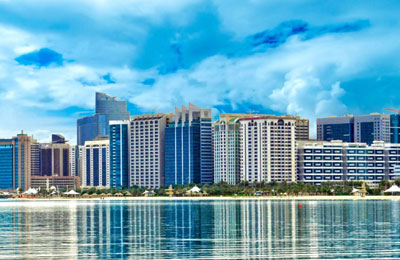
‘Safe haven’ status boosts UAE property
Dubai, December 24, 2012
After grappling with the possibility of more price cuts in the face of new project completions, the UAE’s real estate sector showed good stabilization prospective for the last quarter of 2012, thanks to its ‘safe haven’ status, said a report.
Both Abu Dhabi and Dubai office markets were more tenant-friendly in 2012, as average effective rents continue to fluctuate in both cities, according to a recent market intelligence report issued by Tasweek Real Estate Marketing and Development.
Among the key trends for 2012 confirmed by the report are more realistic market movements, an expansion of choices and sustainability concepts, enhanced quality, better management and an increase in transactions.
On Abu Dhabi, Tasweek said "The capital values of the emirate’s apartments and villas have stabilized with some fluctuations in pricing decline in various areas between 2-5 per cent since the third quarter. At this point in the development cycle, better-quality inventory are entering the market, though, and are exerting pressure on inferior and ageing units."
However, the capping of the emirate’s annual rent increase at 5 per cent and the extension to tenancy contracts through November 2013 as stipulated by the local rent law are expected to help further stabilize the rental market going towards 2013.
According to Tasweek, a new regulation announced by the executive council mandating all government employees to live within the emirate – planned to take effect in 2013 – could have an even more balancing effect on the local residential market.
Around 3,000 new residential units have entered the market since last quarter, most of them representing apartment development, it stated.
Moreover, around 38,000 housing units are in pipeline for delivery by 2014, making the reality sector more competitive. Their release will influence land owners to lower rents and agree to more flexible contract terms, the report added.
As for the commercial and industrial segments, prime office rental rates in premium developments were flat at between Dh1,600 ($3435.4) and Dh1,900 per meter square.
Office rents in the emirate are expected to fluctuate and stabilize in the next six months, as new commercial developments continue to further swell supply. Retail and office performance will depend on the development, with tailored, well-serviced buildings be able to maintain their prices as those of others soften, said the expert.
Tasweek said industrial rent in Abu Dhabi was stable and will remain so for the next few quarters, with further opportunities to arise from the opening of the Dh26.2 billion Khalifa port.
No additional retail malls were completed in Q4, with the opening of several centers even delayed until Q1 2013. An estimated 200,000 square metre of retail GLA could be delivered to the market by mid-2013. Rents in prime retail malls on Abu Dhabi Island have remained unchanged over the past quarter.
Overall, the Abu Dhabi market is a year or two behind Dubai in their cycle of real estate infrastructure and will have to address some challenges in the short term. However, it also promises growth and up trend in the long term, said the report.
On Dubai, Tasweek said announcements of several mega projects were contributing to a steady return to confidence in Dubai. "Nakheel, for example, has sold out 122 residential plots in the Jumeirah Village circle, while Emaar has sold out its three key projects. However some pressure over the expected entry of more property supply through next year," the UAE expert said in its report.
Fortunately, after being the hardest hit sector in face of the financial crisis of 2008, the Dubai’s property sector has shown some signs of recovery in 2012. Rallying sales and rental prices are being reported by projects and various companies in areas such as Emirates Living, Palm Jumeirah, Arabian Ranches and Downtown.
One-bedroom apartments being offered for Dh40,000 or less in some places in Dubai such as Discovery Gardens, International City, Sky Courts, Dubai Silicon Oasis, Remraam and Dunes Village are further sustaining the rebound.
Overall, Dubai’s residential segment has reported growth in certain areas over the last quarter. There is a still high vacancy rate in the office market, though, that is likely to continue for some time due to the large development pipeline, it added.
Masood Al Awar, the CEO of Tasweek said: “There is an overall positive outlook for the key markets of Abu Dhabi and Dubai with the arrival of better quality units and growing confidence in the local real estate industry that are expected to trickle through 2013 especially with mega governmental projects in transport, tourism and logistics."
Al Awar pointed out that the national residential market had displayed variations in performance throughout this year. "Malls that have not been performing well will have to reposition themselves to remain more competitive and customer friendly," he noted.
According to him, the recent decision to allow multiple visa entry to the UAE will have an upward effect on the purchase of freehold properties across the country.
"The ‘safe haven’ image of the UAE will also continue to play an important part in keeping the real estate sector afloat, particularly the hospitality segment," he added.-TradeArabia News Service







